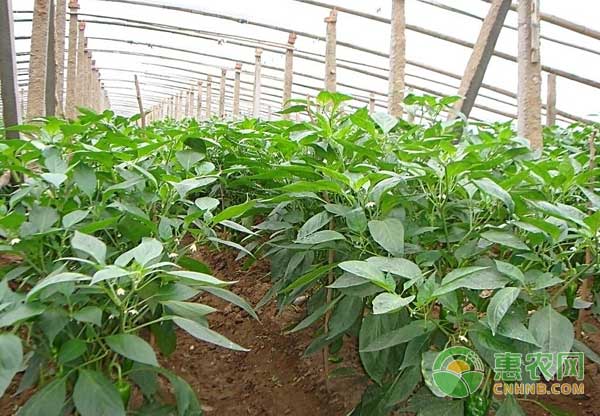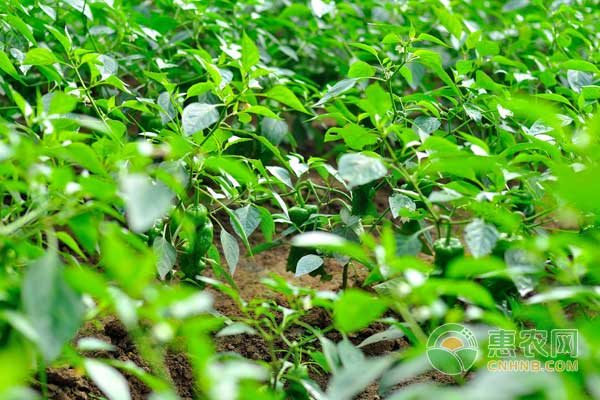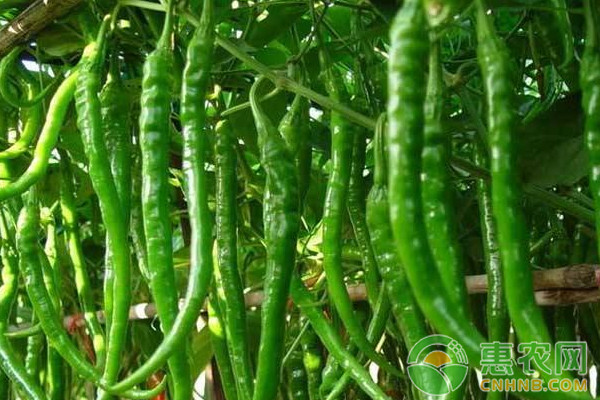Double-season pepper cultivation mode in greenhouses to achieve high yield and low cost of pepper
The double-season pepper cultivation mode in the greenhouse can harvest two peppers, effectively prolong the supply time of peppers, increase the early spring pepper yield, and reduce the production seed cost and labor cost. The following is a brief introduction to the cultivation mode of double-season peppers in greenhouses.

1 èŒ¬å£ arrangement
The peppers were raised in greenhouses in late July, planted in late August, harvested in late October, old branches were cut in mid-February, and the second peppers were harvested in late April, and harvested in mid-June. Chinese cabbage was sown in the middle of 6 and harvested in the middle and late August.
2 greenhouse cultivation techniques for double seasons
2.1 Variety selection
It is advisable to use micro-spicy, disease-resistant, high-temperature resistant, high-yield and high-quality varieties, such as Tongyan No. 3, Tongyan No. 5 and Sujiao No. 5.
2.2 Cultivate strong seedlings
Seedlings are planted in the middle and late July, using a special tray seedling substrate, 1 hole and 1 grain of soil covering 0.5 cm, and the autumn extension of the pepper is used for seedlings, and the seedling period should be covered with a greenhouse to cover the strong light and cool down. Pay special attention to the water supply, keep the substrate moist, and avoid dry and wet. When the seedling height is 12 to 15 cm, it can be transplanted.
2.3 Soil preparation and fertilization
Before the cleanup, the crops were sterilized by high temperature sterilization. Each 667 square meters of sesame-fermented organic fertilizer was 3000 kg and the compound fertilizer was 30 kg. The soil was thoroughly mixed to make the soil and fertilizer fully mixed. The height is 15 to 20 cm, the width is 80 cm, and the depth is 30 cm.
2.4 Colonization
In the late afternoon of August, when it was close to the evening in the afternoon, the leaves were dark green, the stems were thick, and the roots were well-developed. Plant spacing (30 ~ 35) cm × 35 cm, planted 4000 ~ 4500 plants / 667 square meters, planted root water after planting, timely cover the sunshade net moisturizing, cooling.
2.5 Field Management
2.5.1 Temperature Management
Pepper is a warm vegetable, planted to slow seedling stage, high temperature, pay attention to shade and cool down, remove the sunshade net after slow seedling, and control the temperature through the cover of the film. When the outside temperature is lower than 15 °C, the greenhouse vents should be closed. When the temperature in the second half of October is lower than 8 °C, the curtains should be covered with straw curtains.
2.5.2 Fertilizer and water management
After planting, planting the seedling water for about 10 days, planting the fruit after the fruit is placed once, and applying 20 kg of urea per 667 square meters and 15 kg of potassium fertilizer; eight-faced peppers are chased after the fruit, and the fertilizer is 667 square meters. 20 kg of ammonium, 15 kg of urea and potassium fertilizer; after the fruit is placed, the fruit is chased once again, and 30 kg of compound fertilizer is applied per 667 square meters.

2.5.3 Plant adjustment
Plant adjustment was carried out in time, and the axillary buds below the first tiller of the plant were all erased, and the flower buds on the first and second tillers of the weakly growing plants were picked early.
2.5.4 Regeneration Plant Management
In mid-February, select the sunny day and cut off the old branches in time, leaving 15 to 20 cm, and the old branches are removed in time to remove the fields. After pruning, use agricultural streptomycin 1 g plus 75% chlorothalonil 30 g to add water to make a paste, and apply the cut. After about 10 days of cutting, the pruned main stems will take out two new branches and then choose two strong regenerative branches. The regenerated plants will be managed in the future according to conventional management methods.
2.5.5 Pest Control
Pests and diseases adhere to the principle of prevention and comprehensive prevention. Use 72.2% Pulk emulsifiable concentrate 400 times or 75% chlorothalonil WP 600 times to prevent rickets and blight. The gray mold is controlled by 50% of keering WP 1500 times or 50% carbendazim WP 500 times. The early blight was prevented by spraying with 1200 times of 50% chlorhexidine WP and 75% chlorothalonil WP 600 times. The aphids were controlled with 10% imidacloprid wettable powder 1500 times and 10% cypermethrin EC 2000 times. The Liriomyza sativae was treated with 20% of the sloping emulsion 1000 times solution and 10% of the sloping suspension agent 1000 times.
5.2.6 Harvesting
From the end of October to January, the first red pepper or green pepper supply market will be harvested. It can also be delayed until the Spring Festival in February according to the weather conditions and the warmth of the facilities. The second pepper supply market began to be harvested in late April and has been received since early June.
3 Chinese cabbage cultivation techniques
3.1 Variety selection
Choose strong-breeding, good-good, high-yielding green-breasted hybrid Chinese cabbage varieties, such as Arctic, Huaguan, Qingling 316, Jinpin 28 and so on.
3.2 Fertilization
Apply 30 kg of compound fertilizer per 667 square meters, and 1500-2000 kg of decomposed farmyard manure. Deep tillage, 2 畦 per shed, 畦 "concave" shape, smooth surface, high and low in the middle of the 畦, 畦 埂 30 30 cm wide, 15 cm above the surface.
3.3 Irrigation and sowing
1 to 2 hours before each sowing, the pot is filled with water, and the water is basically infiltrated into the soil for sowing. Each 667 square meters is planted with 300-400 grams and 3 to 4 kilograms of fine soil, and the seeds and fine soil are mixed and spread.
3.4 Fertilizer management
Because the bottom water is poured, the whole process of producing Chinese cabbage can only be filled with water for 1 or 2 times in the early and late stages, and the water depth is about 5 cm, which can fully meet the water demand of the cabbage growth.
Due to the short growth period of the Chinese cabbage, on the basis of the application of the base fertilizer, there is generally no need for topdressing. According to the growth of Chinese cabbage in 15 days, combined with irrigation, the fertilizer is topdressed with 10 kg of urea per 667 square meters.

3.5 Temperature Management
During the whole growing season, the skirt of the greenhouse is rolled up to ensure that the temperature inside the shed cannot be too high. Pull down the skirt before raining to prevent the rain from flowing into the shed and causing damage. In the hot season of July and August, the shade film was covered with a sunshade net to cool down. It was covered at 9 am and was exposed at 4 pm.
3.6 Pest Control
The cabbage cultivation in the greenhouse is basically isolated from the invasion of foreign insect sources. A small amount of aphids and cabbage caterpillars can be used for prevention and control once in the early stage.
3.7 Harvesting
Cabbage is generally harvested once in 20 to 25 days after sowing. It can also be used as a second sale, that is, the chicken feathers are collected once after sowing, and the cabbage is collected once every 10 to 15 days after topdressing.
The above is the efficient cultivation mode of greenhouse double-season pepper. This model not only increases production but also saves costs.
SARMs is a new performance-enhancing compound that is shaking up the fitness industry. They have the ability to promote muscle growth, fat loss, and even cardiovascular endurance. To maintain legitimacy, these new compounds, sold for "research purposes," are emerging as promising alternatives to anabolic Steroids. A lot of people are trying to promote dramatic changes in SARM's body structure.
As we age, our endurance, strength and skeletal muscle mass decline due to the gradual loss of type 2 muscle fibers. This severely limits our individual athletic performance. Skeletal muscle mass and muscle strength were significantly improved with SARM in this androgen deficient population.
Hormone receptor modulator. Basically, it's a fancy term for a drug that affects hormones in the body in a very specific way. It's very different from the way steroids work. Take testosterone, for example. Testosterone is considered the gold standard of anabolism and is used by millions of people around the world. While it's great at promoting muscle growth, it can also cause horrible side effects such as enlarged breasts and hair loss in women. This is because testosterone is converted into both estrogen and DHT in the body.
Let's take a look at the current SARM lineup on the market. I'll go through each one in detail and explain how they work.
sarms for sale,buy sarms online,sarms side effects,sarms supplement,sarms bodybuilding
Shaanxi YXchuang Biotechnology Co., Ltd , https://www.peptide-nootropics.com